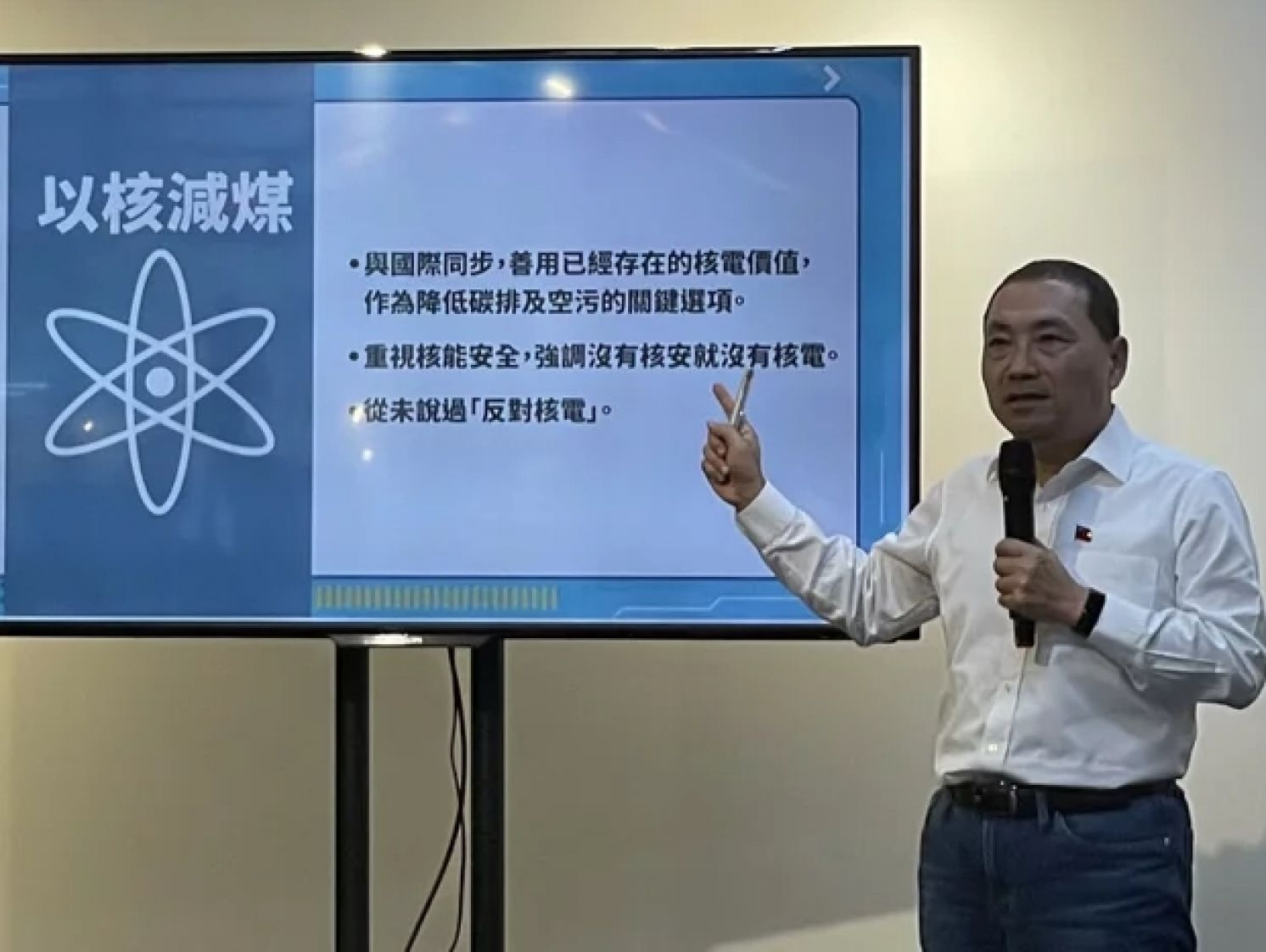
Hou's Plan to Reduce Carbon Emissions Embraces Nuclear, Renewable Energy
United Daily News, August 10, 2023
Under the anti-nuclear movement, the Kuomintang’s (KMT) energy policy has been a target of public scrutiny. Nevertheless, the energy policy is generally a strong suit of the KMT. Presidential candidate Hou Yu-ih’s energy policy is divided into four stages. The first stage is the “carbon reduction goal for 2030” that includes cutting natural gas consumption to 45 percent and coal to 14 percent in five years. This is equivalent to reducing gas and coal consumption by two-thirds from now and half from 2025, which is much more progressive than the ruling Democratic Progressive Party’s (DPP) goal of cutting natural gas consumption to 50 percent and coal to 30 percent by 2025. Mr. Hou’s ambitious plan is based on the double assurance of nuclear power and renewable energy.
In contrast with the policy of the administration of President Tsai Ing-wen, Mr. Hou’s plan to reduce carbon emissions are more logical. Both natural gas and coal are thermal power and while carbon emissions are different from other sources of pollution, their ability to reduce carbon emissions cannot compare with nuclear power and renewable energy. The anti-nuclear topic has been the divine tablet of the DPP. However, abolishing nuclear power and increasing gas and coal power generation run opposite to the objective of carbon reduction.
The sharp increase in power generation from natural gas has caused serious concerns in national security. By discarding “the anti-nuclear spell,” Mr. Hou is able to increase the ratio of nuclear power to resolve national security concerns and meet the goal of carbon reduction.
In comparing the DPP’s energy position, Mr. Hou’s energy policy is more practical and achievable. Yet there are three issues that need further clarification: First, the disposal of nuclear waste. Mr. Hou plans to adopt international scientific methods to handle nuclear waste by building underground permanent repositories. However, given Taiwan still cannot settle on if they should build indoor or outdoor dry storage repositories for the existing nuclear power plants, it will not be an easy task to build a permanent repository. Mr. Hou is against outdoor dry storage and even had lawsuits with the Taiwan Power Company (Taipower) on this matter.
Second, Mr. Hou’s energy plan from carbon reduction to zero emissions is primarily based on renewable energy. Nuclear power is targeted at 18 percent of the energy mix, roughly the percentage after reopening the first and second nuclear power plants, extending the third nuclear power plant, and starting the fourth nuclear power plant. Does this mean they are preparing to keep the old first and second nuclear power plants in operation until after 2050? Or are they planning on building new nuclear power plants? How will renewable energy be developed? Mr. Hou needs to elaborate on those questions.
Third, several scandals have occurred during the Tsai administration’s development of green energy, demonstrating that the Tsai administration has connived at profiteering private businesses. Seeing that a few KMT supporters were also involved in said scandals, if Mr. Hou is determined to get rid of corruption, he should make unequivocal declarations.
In contrast with the presidential candidate of the DPP Vice President William Lai, the Taiwan People’s Party candidate Ko Wen-je has only presented slogans instead of concrete plans in his energy policy proposals. Mr. Hou deserves great credit for taking the initiative in announcing his energy policy. Many KMT supporters advocate nuclear power. Therefore, an early announcement of energy policy also serves the political purpose of consolidating Mr. Hou’s base of support. However, it would also examine Mr. Hou’s previous position on nuclear power. Whether steps to support nuclear power cause a shift in the electoral polls has yet to be observed.